Fishes
Media

Species Types
Scientific Name
Platygobio gracilis
Description
The flathead chub is a slender, silvery minnow with small eyes, sickle-shaped pectoral fins, and wedge-shaped head with a pointed snout. Native to Missouri's big rivers and their tributaries, it is now state endangered.
Media
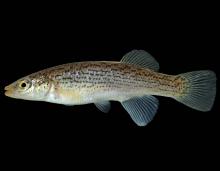
Species Types
Scientific Name
Fundulus catenatus
Description
The northern studfish is common and widely distributed in every principal Ozark stream system except the Neosho. Males in spawning coloration are some of our prettiest topminnows.
Media
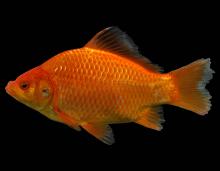
Species Types
Scientific Name
Carassius auratus
Description
Goldfish are not native to North America. They often escape into the wild from bait buckets and other causes, but there are few self-sustaining populations in Missouri.
Media

Species Types
Scientific Name
Ctenopharyngodon idella
Description
Grass carp are large-bodied with a broad head and a terminal transverse mouth. The scales appear crosshatched. A native of east Asia, it is now widely distributed in the Missouri, Mississippi, and St. Francis rivers and in impoundments.
Media
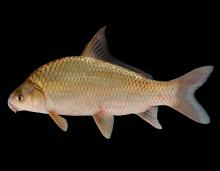
Species Types
Scientific Name
Carpiodes carpio
Description
The river carpsucker has a silvery, deep, rather thick body, a long, sickle-shaped dorsal fin, and whitish lower fins. It is the most abundant and widely distributed carpsucker in Missouri.
Media
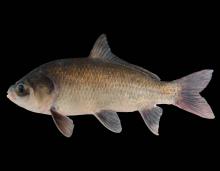
Species Types
Scientific Name
Ictiobus cyprinellus
Description
Missouri's largest sucker, the bigmouth buffalo occurs over much of the state and is most abundant in the Missouri River and its larger tributaries to the north.
Media
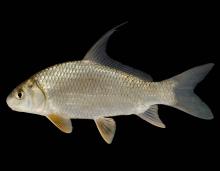
Species Types
Scientific Name
Carpiodes cyprinus
Description
Like our other carpsuckers, the quillback has a deep, rather thick body and a long, sickle-shaped dorsal fin. This silvery, hump-backed fish is widely distributed in Missouri.
Media
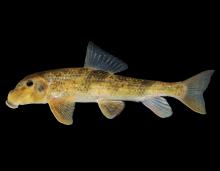
Species Types
Scientific Name
Hypentelium nigricans
Description
The northern hog sucker is one of the most abundant and widely distributed stream fishes in the Ozarks. It has a large, bony, square head. The mouth is at the tip of snout on the bottom. There are usually four dark crossbars.
Media
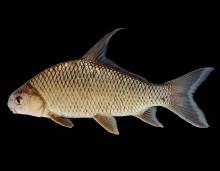
Species Types
Scientific Name
Carpiodes velifer
Description
The highfin carpsucker is named for the remarkably long first principal ray of its dorsal fin. It is rare in Missouri and is a Species of Conservation Concern.
Media
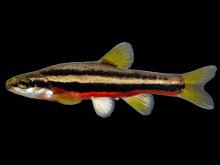
Species Types
Scientific Name
Notropis, Cyprinella, Hybognathus, Luxilus, and others
Description
Minnows — including shiners, chubs, stonerollers, dace, and carp — are members of the minnow family, the Cyprinidae. It is the largest of all fish families, and Missouri has about 70 species.
See Also


Media

Species Types
Scientific Name
Amphiuma tridactylum
Description
The three-toed amphiuma is an eel-like, completely aquatic salamander. It has very small forelimbs and hind limbs, each with three tiny toes. In Missouri it’s found only in the Bootheel region.
Media

Species Types
Scientific Name
Siren intermedia nettingi
Description
The western lesser siren is an eel-like, aquatic salamander with external gills, small eyes, small forelimbs with four toes, and no hind limbs. In Missouri, it’s found mostly in the Bootheel and northward in counties near the Mississippi River.
About Fishes in Missouri
Missouri has more than 200 kinds of fish, more than are found in most neighboring states. Fishes live in water, breathe with gills, and have fins instead of legs. Most are covered with scales. Most fish in Missouri “look” like fish and could never be confused with anything else. True, lampreys and eels have snakelike bodies — but they also have fins and smooth, slimy skin, which snakes do not.





















